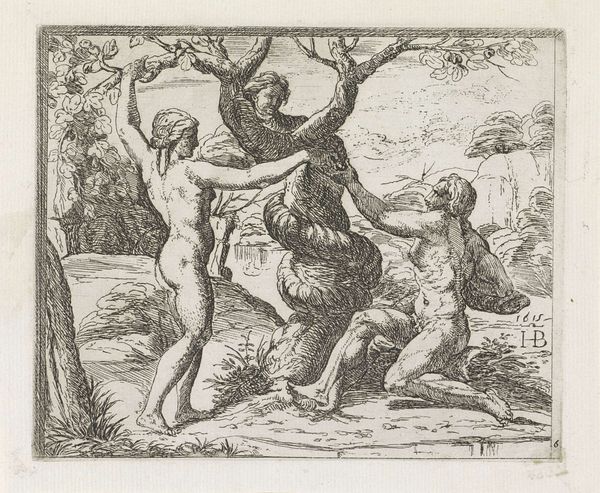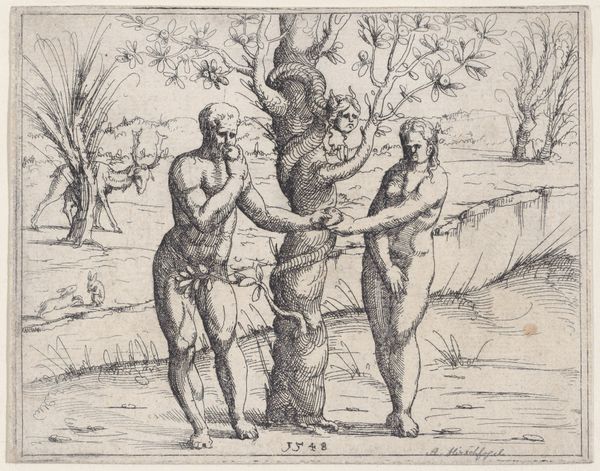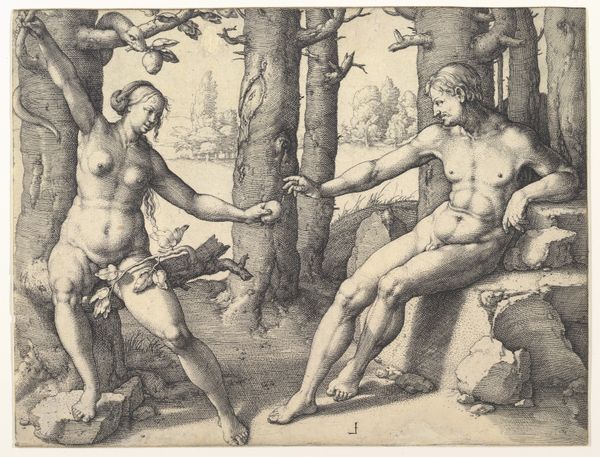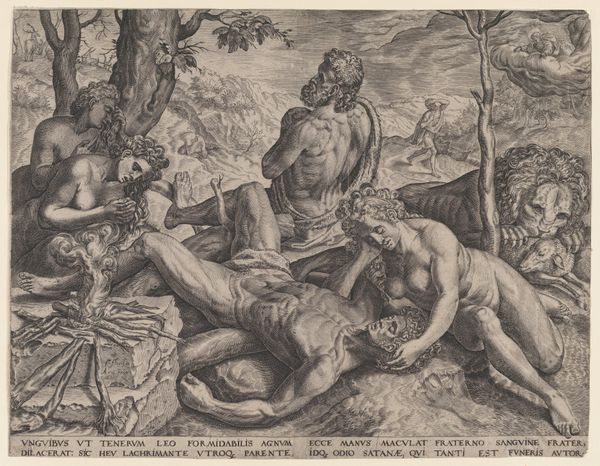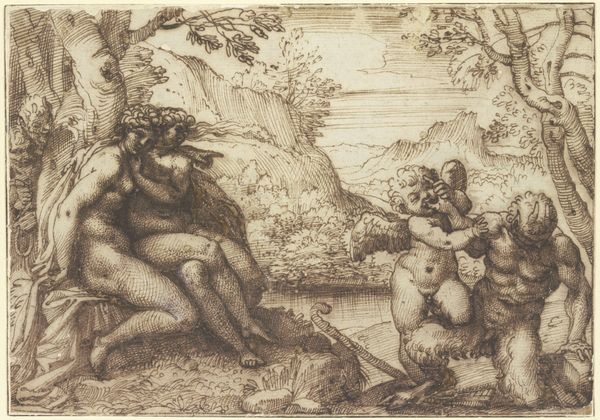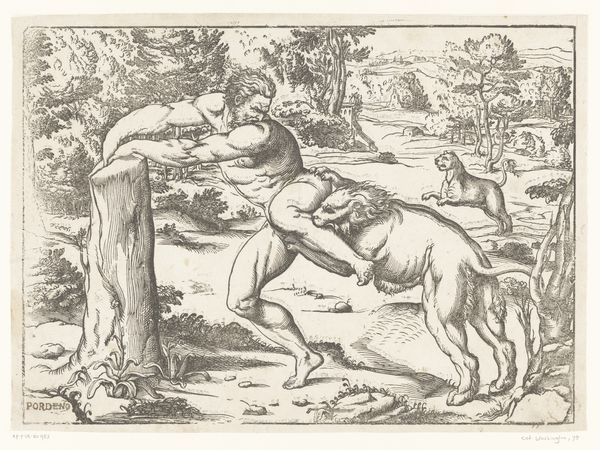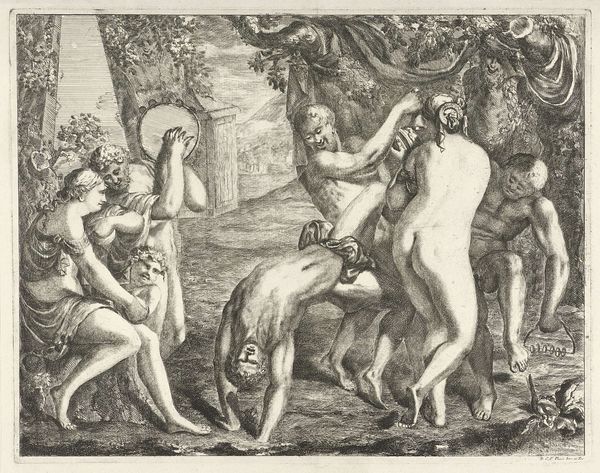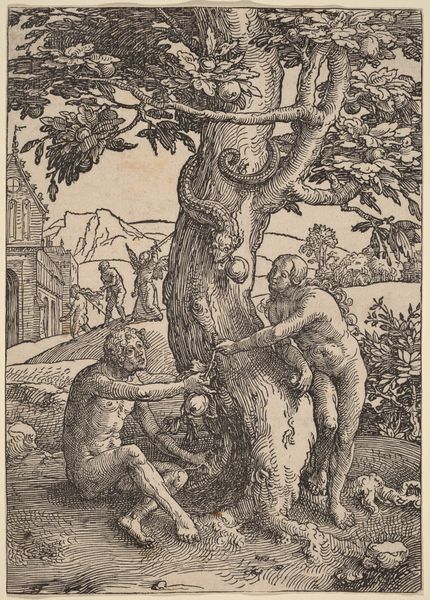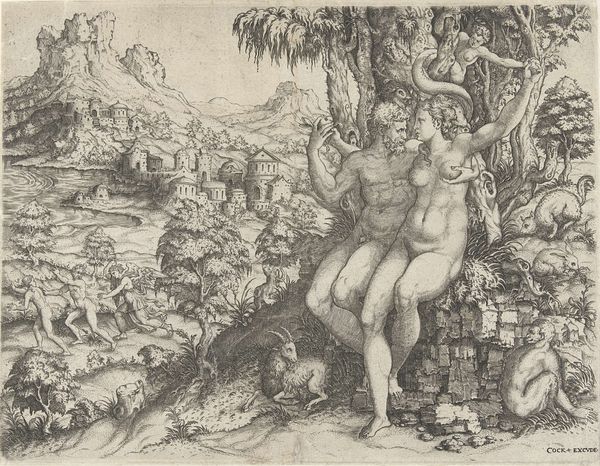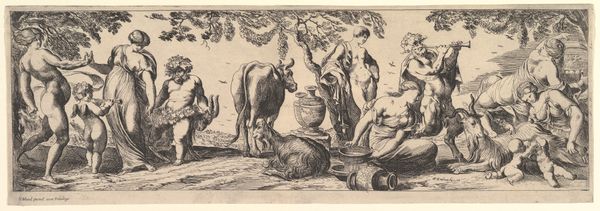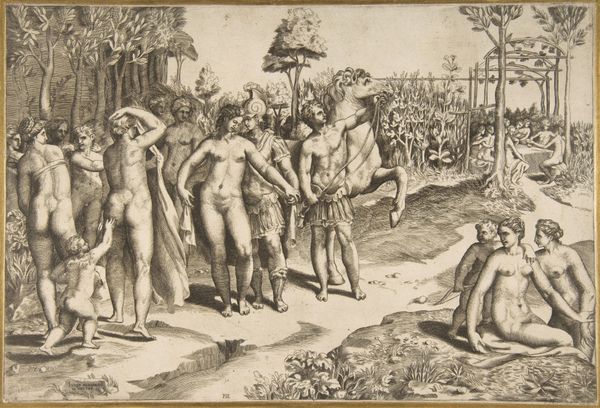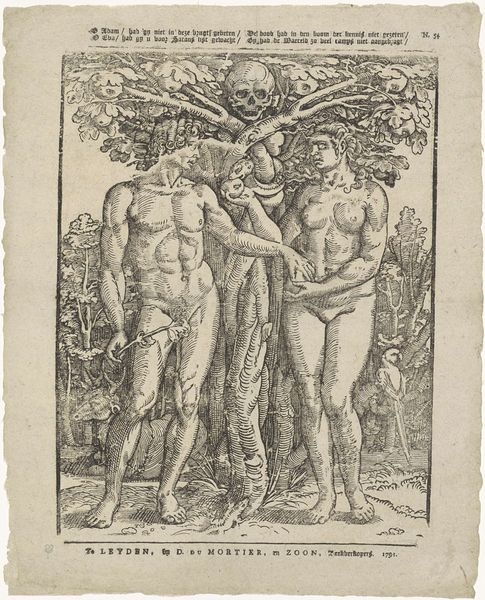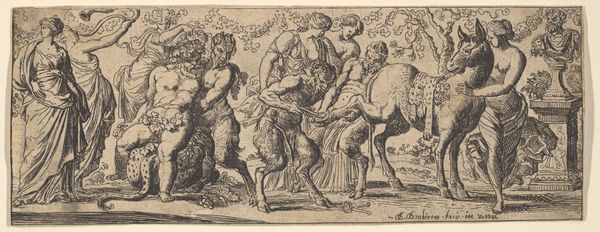
Adam and Eve Eating the Forbidden Fruit, from Old and New Testaments 1548
0:00
0:00
drawing, print, engraving
#
drawing
# print
#
landscape
#
figuration
#
history-painting
#
northern-renaissance
#
engraving
Dimensions: Sheet: 4 5/8 × 5 7/8 in. (11.7 × 14.9 cm)
Copyright: Public Domain
Curator: This engraving by Augustin Hirschvogel, from 1548, depicts "Adam and Eve Eating the Forbidden Fruit." Note its inclusion in "Old and New Testaments" within the Metropolitan Museum of Art's collection. What are your immediate observations? Editor: The crispness of the engraving is striking. The linear quality gives it an almost architectural feel. Curator: Indeed, Hirschvogel was known for his skills as a mapmaker and glass painter. That training likely influenced his meticulous technique here. But beyond the surface, it is really a piece about patriarchal societal construction and a direct connection to the perceived role of women within the bible, especially related to the loss of innocence. Editor: Semiotically, the forbidden fruit is a clear signifier, and is meant to carry particular narrative baggage; observe how he renders the figures of Adam and Eve in contrapposto. The positioning creates a balance and adds a classical dimension to the scene, which speaks to a larger tension here in bridging older visual styles. Curator: Precisely. And notice how Eve reclines almost seductively. This reinforces the notion of women being primarily associated with desire and temptation within religious visual and literary canons, positioning women at fault for humanity’s missteps. Even the unicorn behind them serves as a loaded signifier of purity and grace set against the supposed depravity in the work's foreground. Editor: Agreed, but isn’t Hirschvogel also highlighting the inherent vulnerability in these human forms, depicted with such precision? It feels honest—a look at our collective weaknesses rather than purely a misogynistic reading, perhaps? He emphasizes form as part of the image’s conceptual design and appeal. Curator: Well, maybe he’s unconsciously commenting. However, given the time period, this work contributes to broader cultural ideas regarding the inferiority and inherent dangers linked to women’s roles. That matters greatly for how viewers engage with these sorts of religious stories even now. Editor: Fair enough, it remains a dense and highly articulated synthesis of form, medium, and sociohistorical dialogue. Curator: And a constant reminder of just how entrenched some toxic frameworks still seem to be!
Comments
No comments
Be the first to comment and join the conversation on the ultimate creative platform.
